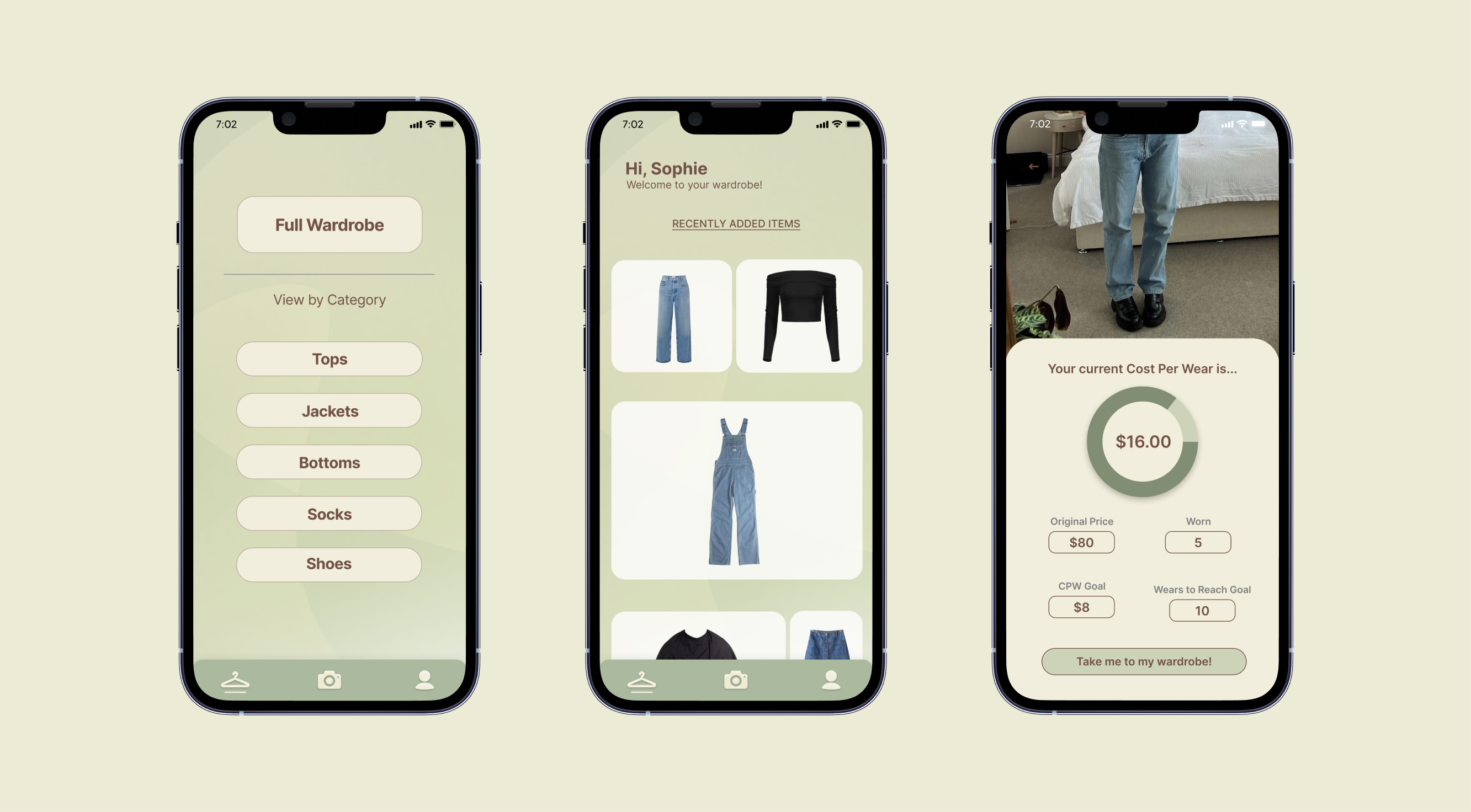Ethica
Ethica is a solution to waste management. It is a fashion app that uses Cost Per Wear (CPW) to calculate how much you are spending each time you wear your clothes.
View Demo ↗Type
Mobile App Prototype
Skills
Figma
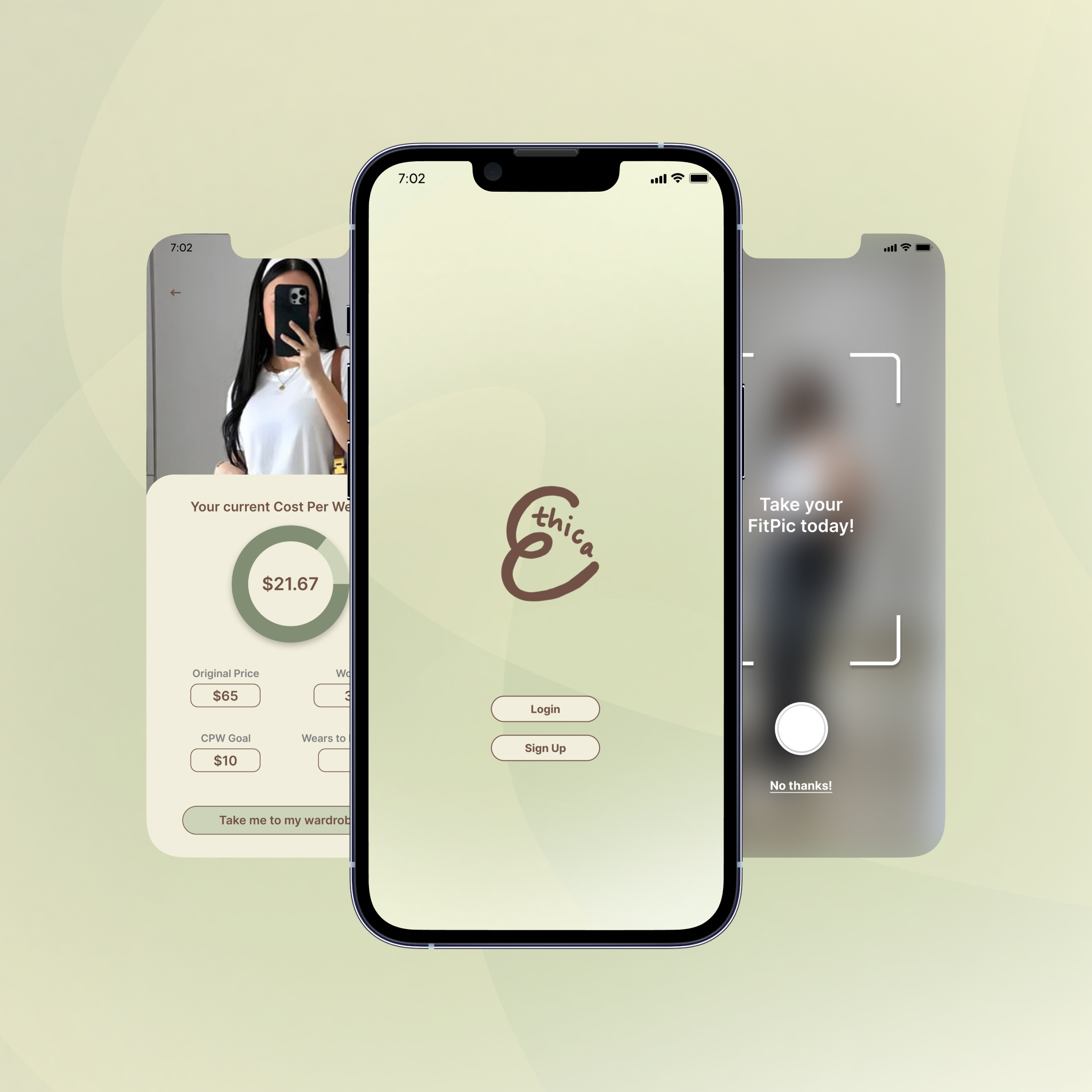
Ethica is a solution to waste management. It is a fashion app that uses Cost Per Wear (CPW) to calculate how much you are spending each time you wear your clothes.
View Demo ↗Mobile App Prototype
Figma

Fast fashion is a business model followed by the clothing industry in which catwalk trends and high-fashion designs are copied, mass-produced at a low cost, and shipped quickly to retail stores.
This was a submission for Bruin Entrepreneurs 2023 Designathon where we received praise for uniqueness.
Ethica is an app where users can make smarter and more sustainable fashion choices through their data. Ethica uses cost-per-wear metric to help users visualize the true value of their clothing
I led the user interface and user experience design for the project. I focused on branding, wire-framing, and prototyping.
The idea for Ethica began with a question: why do we buy so many clothes we rarely wear? Our team discovered that students often felt guilty about overconsumption but didn’t have a clear way to track or visualize their habits.
We brainstormed solutions and mapped user flows focused on simplicity: log your outfit, calculate your CPW, and learn your wardrobe’s impact.
Our visual direction was inspired by clean neutrals, recycled textures, and calm gradients. We designed the interface to feel light, minimal, and data-driven but still friendly, helping users feel supported rather than judged about their consumption habits.
We tested our high-fidelity prototype with college students who identified as frequent online shoppers. Their feedback revealed that users wanted more positive reinforcement and visual progress.
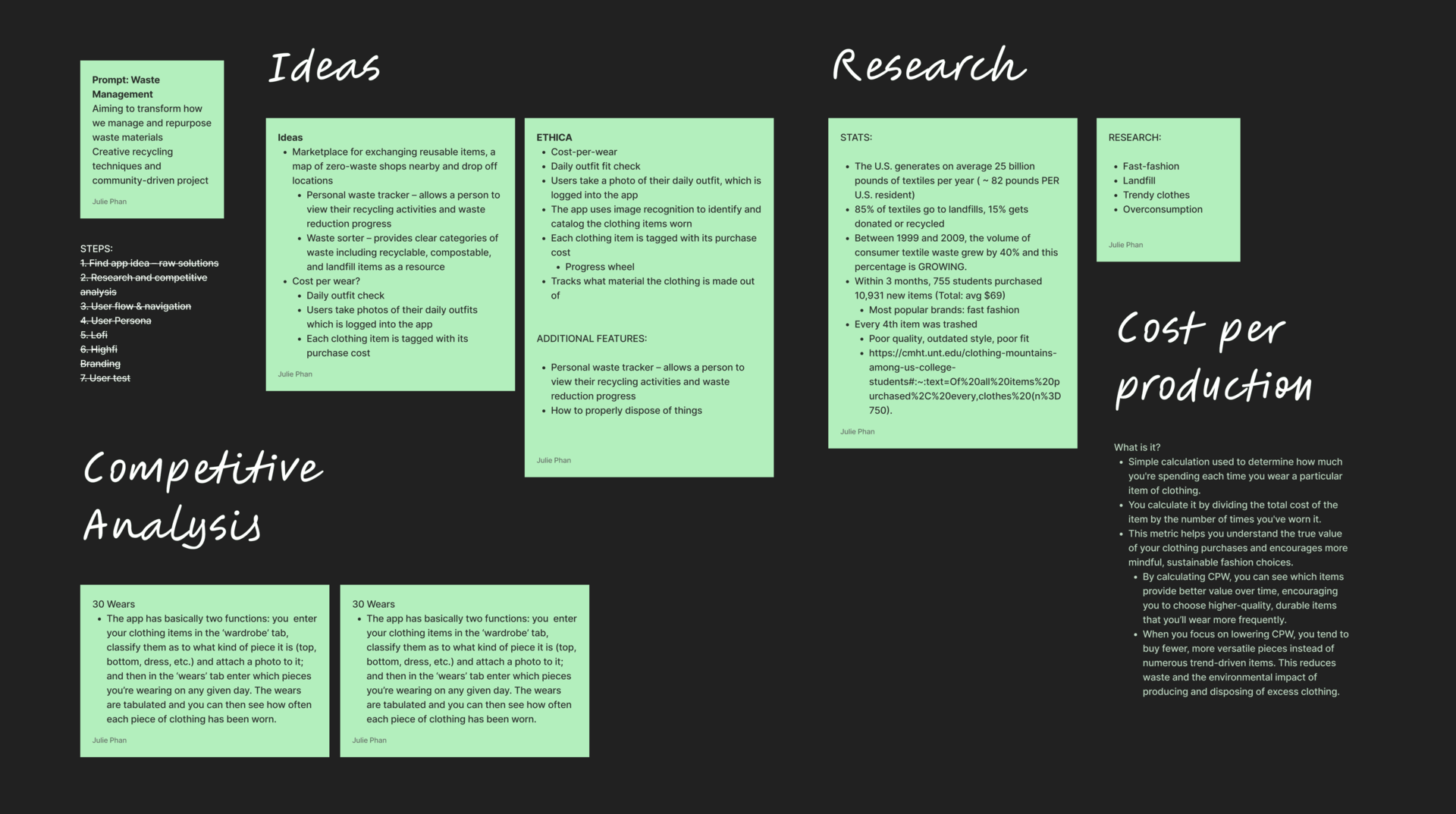
To understand how college students engage with fashion and consumption habits, we conducted short interviews with 10 participants aged 18–22 from UCLA.
Our goal was to explore how students shop, use, and dispose of clothing.
Many students expressed guilt over their shopping habits but they lacked tools to visualize or track their behavior.
Buy new clothes monthly
Don’t track wardrobe usage
Know about Cost-Per-Wear
Main challenges identified:
Saving money
Helping the planet
Decluttering wardrobe
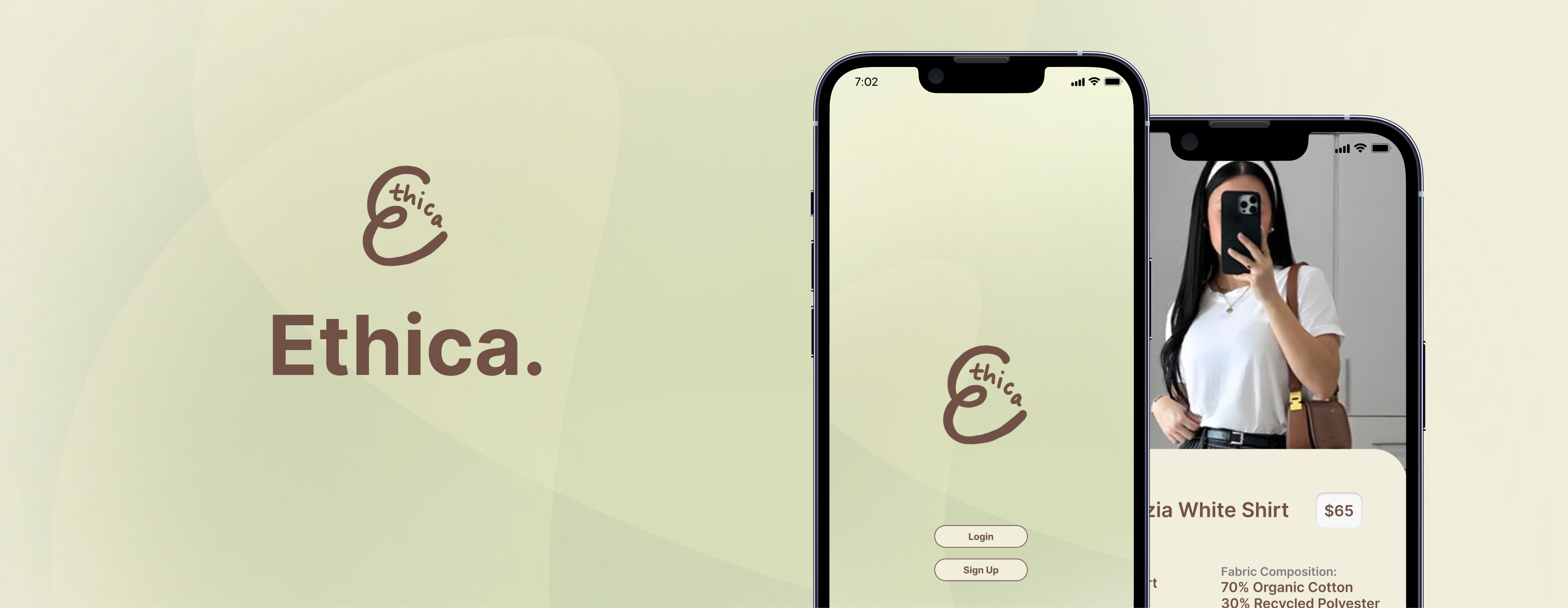
A sustainability-focused fashion app that helps users track their clothing usage and waste impact. It has features such as cost-per-wear analysis and daily outfit logging.
We designed the experience around these core features: cost-per-wear tracker, material & sustainability tracker, and daily outfit logging.
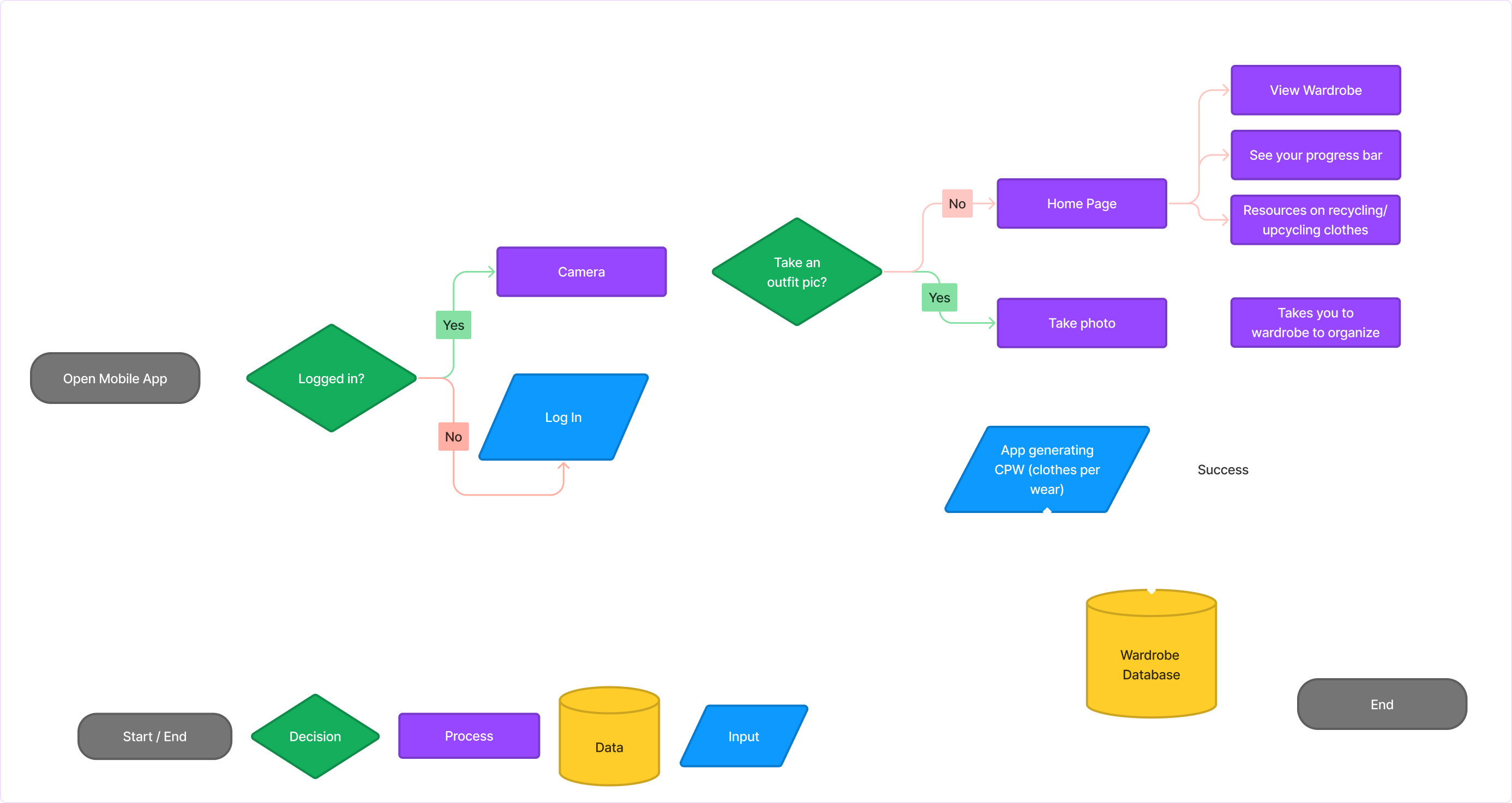
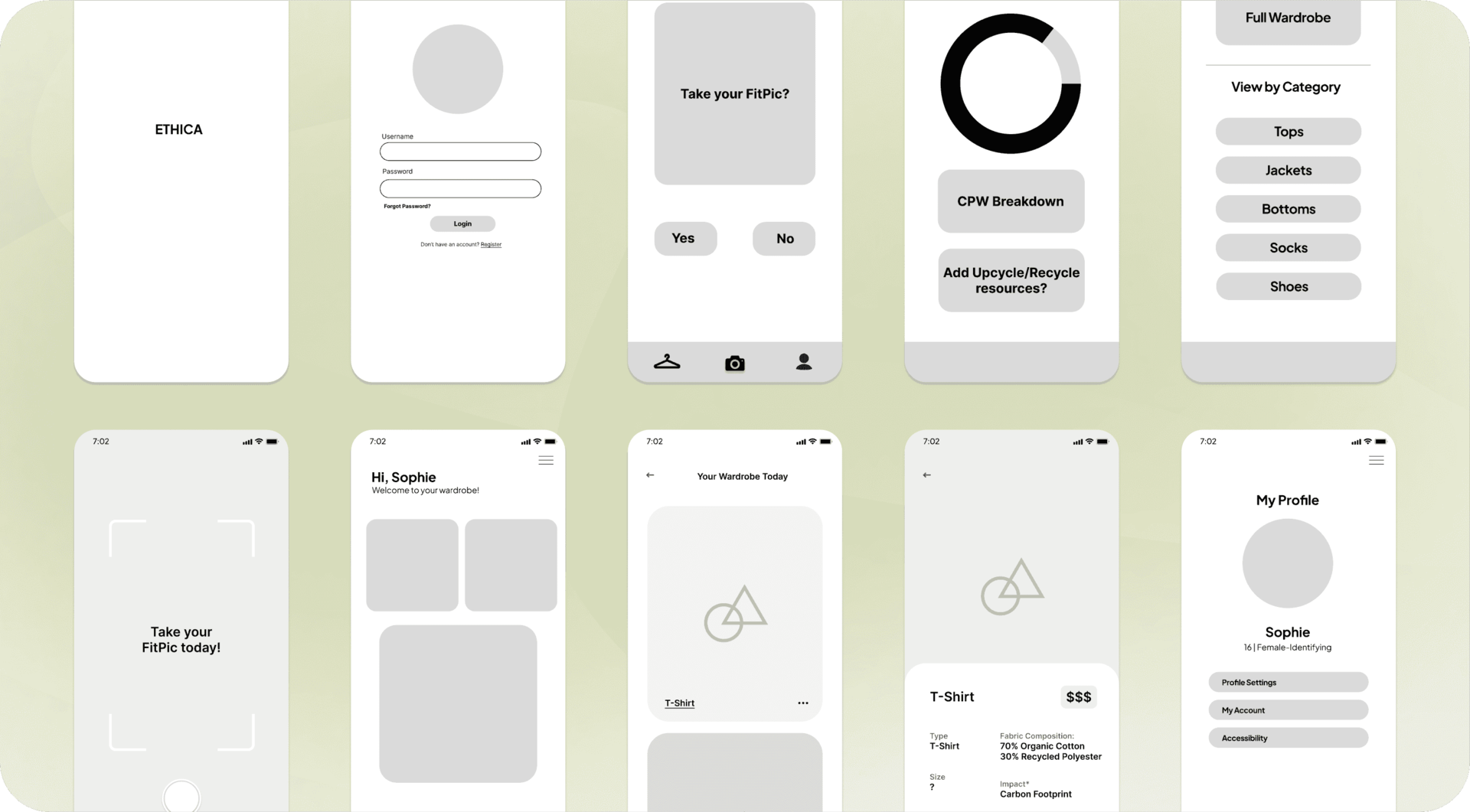

Our branding reflects eco-consciousness and mindful consumption. Our primary green tones represent renewal and sustainability while the seconary color, brown, evokes natural materials.
We want Ethica to feel fresh and modern.
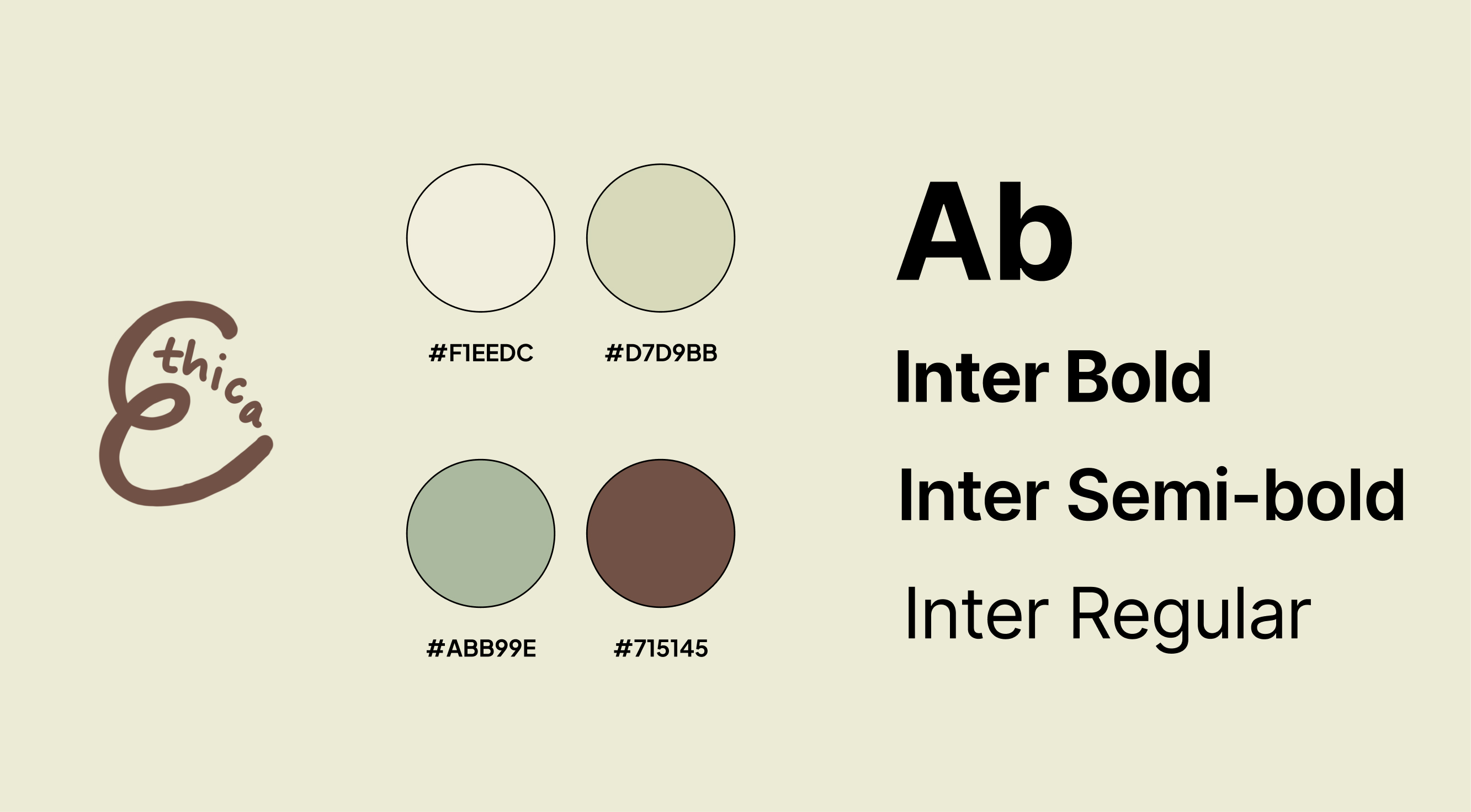
When users first open Ethica, they are welcomed with the camera that captures the outfit of the day.
After snapping a photo, they're guided to an Outfit Breakdown where the app uses image recognition to identify each clothing item.
Ethica then sorts it into your digital closet, updating their wardrobe history and usage data.
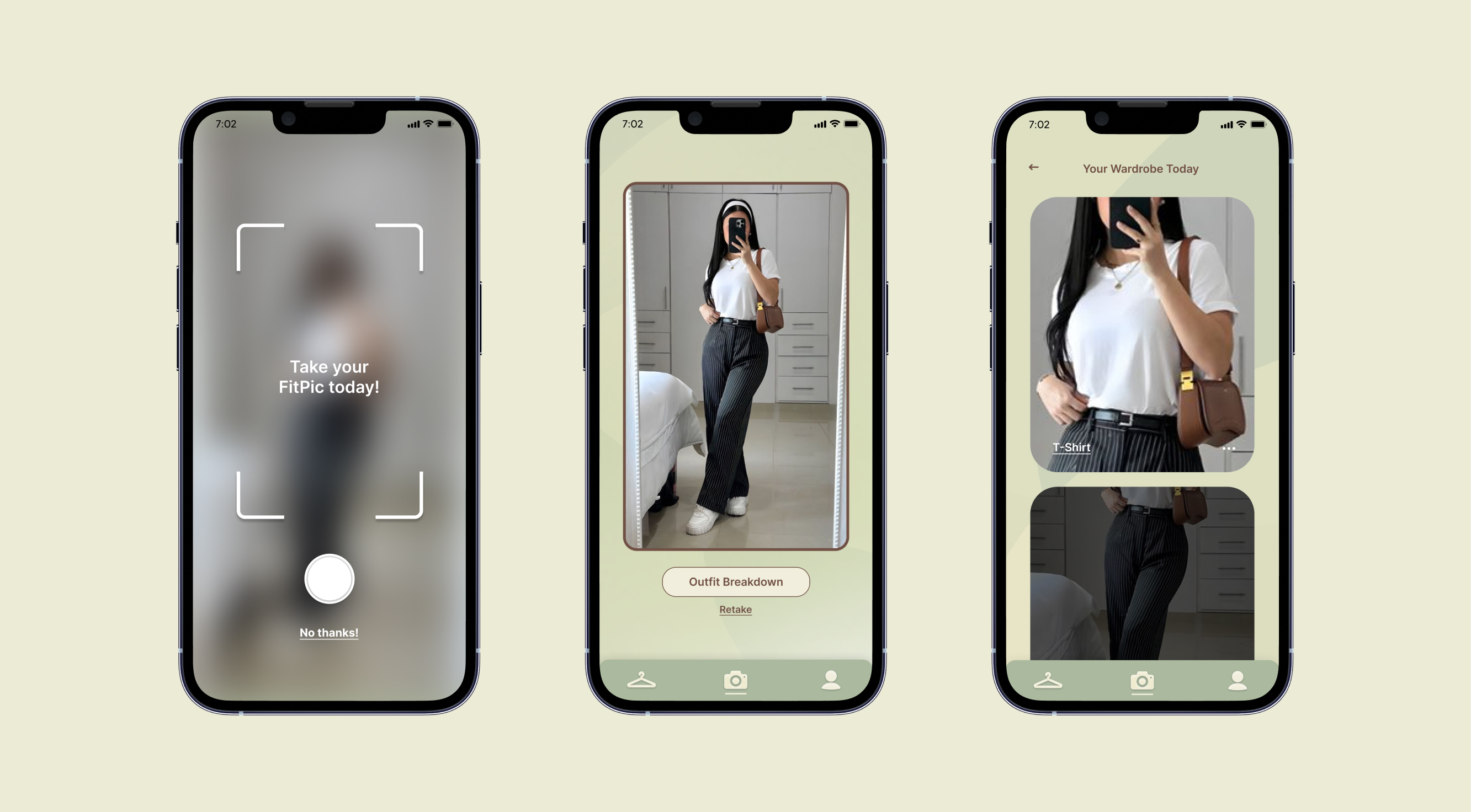
After uploading an item, the app displays key details such as brand, type, fabric composition, environmental impact, size, and total number of wears.
Users can enter the item's original price and set a CPW goal. Ethica updates the current CPW each time the item is logged.
This visualization progress towards a lower CPW is to encourage users to rewear their clothes.
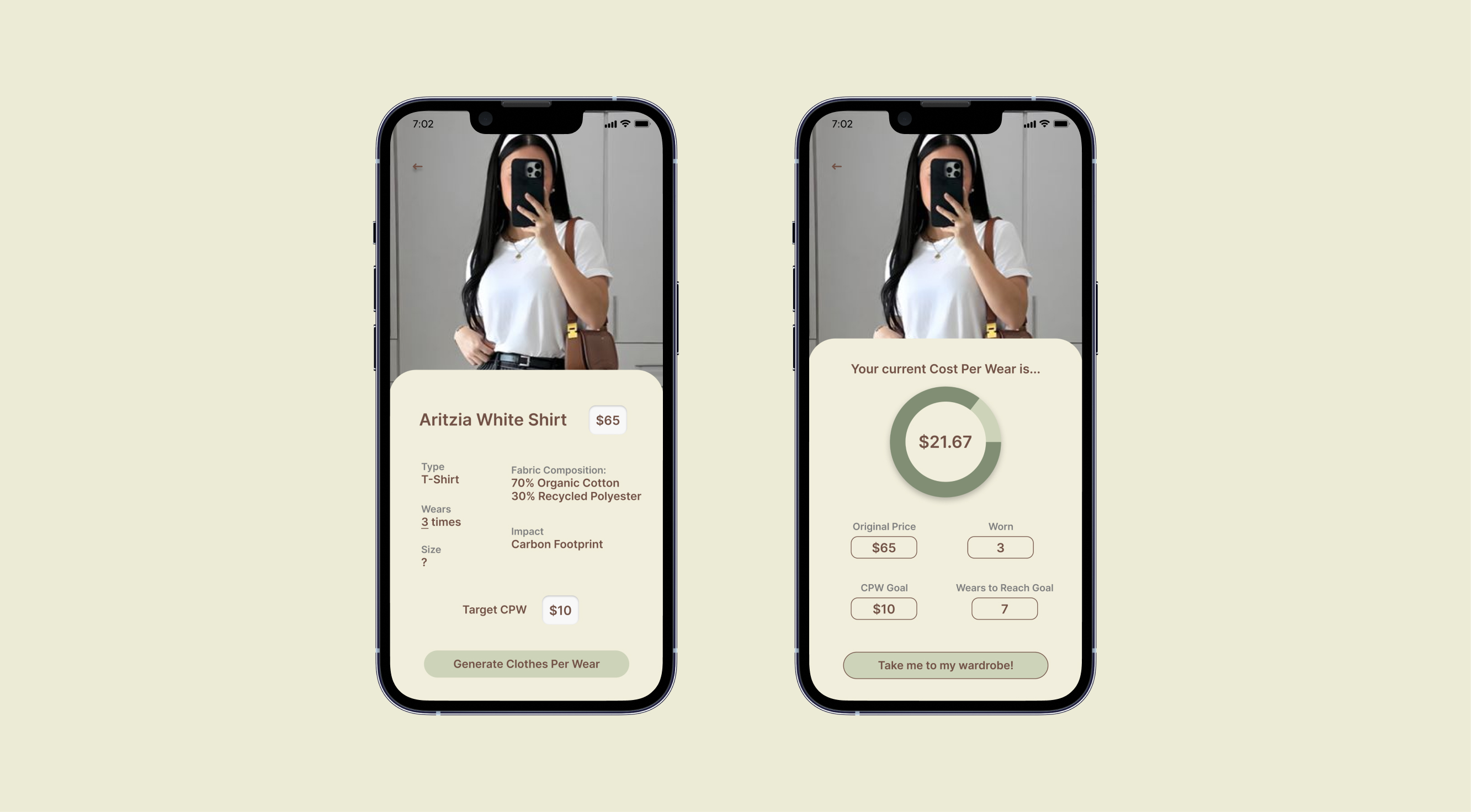
Each clothing item is automatically sorted into categories such as tops, bottoms, and outwear to make it easier to browse and manage for future references.
When users tap on a specific item, they can view the detailed insights and see their progress towards their CPW goal.
